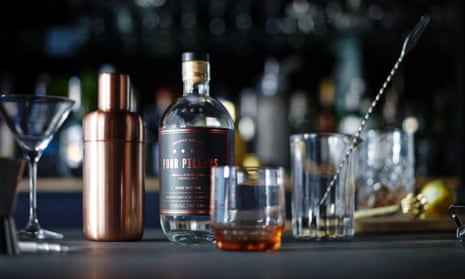It’s time to charge your glasses because 14 June is World Gin Day. And though here in the wintery southern hemisphere it’s hardly prime gin-drinking weather, we should celebrate the fact that we’re drinking – and producing – some of the best gin in the world.
Over the past five years, gin consumption in Australia has risen nearly 50% across most age groups. The highest growth is seen in those aged 18-24, with an impressive 92% proportional increase in consumption (don't be alarmed, this does not represent a net increase in alcohol consumption). Gin is no longer just the tipple of choice for your nana. And with new micro-distilleries popping up every other week consumers are spoilt for choice and quality.
The gin trend is a reflection of a similar decade-long growth in popularity in Britain, whose history with gin stems back to the 17th century when William of Orange ascended to the crown. The new king banned imports of wine and cognac from France and encouraged everyone to make genever, a type of gin made in his native Holland. All of a sudden everyone was making gin of dubious quality in their bathtubs and basements, triggering the introduction of a series of gin acts in an attempt to regulate the industry. And by 1823 these had effectively shut down all but the most professional gin distilleries.
In the late 1990s a clever distilling and excise consultant, Alan Powell, challenged the standard interpretation of the regulations from 1823 and helped the London Distillery Company obtain a licence for a much smaller 350-litre whiskey still. With smaller stills now legal, it didn't take long for small-batch gin distilleries to start popping up all over London and the UK. Not much later Sipsmith, the first new gin distillery in greater London in more than 200 years was established. It wouldn’t take long for this gin renaissance to make its way to our shores.
With the country in the grips of a larger trend for everything handcrafted and boutique, distilling poses no exception. Whiskey has the higher profile, but a number of distilleries that set out to distill whiskey have been sidetracked into gin distillation during the considerable waiting period for whiskey to mature. And though vodka endures in holding the title of world's most popular spirit (due, in part, to Russia’s massive consumption of 13.9 litres per person per year) its simple filtration process makes it rather dull to distill. With gin, however, a distiller can get creative.
Gin must be flavoured with juniper berries, but everything else is up to the distiller. They can use all kinds of herbs, spices, fruit and flowers to blend a distinctive drop. When this gin revolution reached Australia we discovered that our huge range of native botanicals could inspire us to make some of the world’s finest and most distinctive gins. Gins flavoured with exotic plants such as finger limes, pepperberries, lilly pillies and bush tomatoes have all been spotted on the market.
Jeremy Spencer from West Winds, one of the first boutique gin distilleries in Australia notes our underdog status in the gin race: “We challenged those who said we couldn't make gin in Australia by winning over the public, media, and judges at world spirit shows like San Francisco and London.”
While Stuart Gregor, co-owner of Four Pillars Gin, has produced a distinctly contemporary Australian gin in releasing his first batch late last year: "Much like modern Australian food, we use Asian botanicals, flavours from the Middle East and Europe, and then the best of Indigenous botanicals. And it comes together to make a style that we think is unique."
Another contributing factor in this global wave of gin adoration is a notable improvement in the quality of tonic water. Overly sweet supermarket brands had dominated the show for decades, and mixed with lower-quality gins, the gin cocktail was sugary and uninspiring. Now Australian audiences are discovering the pleasures of small-batch gins, blended with beautifully balanced tonic waters like Fever Tree from the UK, Quina Fina from New Zealand and Australian Capi.
Australia may be a new contestant in the gin game, but already Four Pillars and West Winds have picked up double gold at the prestigious San Francisco World Spirits Competition. With such an impressive debut it is clear Australian gin has well and truly found a place on the world stage.
- This article was amended on 13 June 2014. The earlier version misnamed Jeremy Spencer as Jeremy Shipley.

Comments (…)
Sign in or create your Guardian account to join the discussion